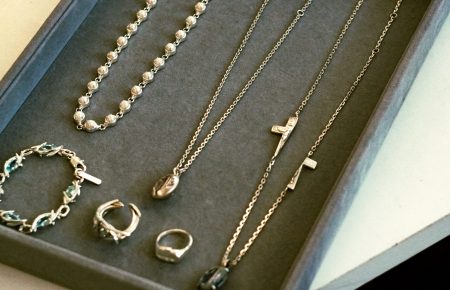GORE-TEX technology dates back to 1969. Since its conception, GORE-TEX has been implemented in a wide range of products. The technology that repels water drops and splashes while still letting water vapor pass through is arguably best known for its use in The North Face outerwear, which makes perfect sense, but GORE-TEX has bigger plans for the future. With the rapid growth in popularity of techwear and the general proliferation of high-performance fabrics and technologies in everyday fashion, Benedikt Schlichting—business leader for performance wear at GORE-TEX—sees a bright and varied future for the company. Along with his work in performance wear, Benedikt has taken on responsibilities in spearheading collaborative projects on behalf of GORE-TEX; their new collaborative project with BYBORRE, The Hybrid Edition, embodies the evolution of GORE-TEX as it aligns itself with the changing fashion landscape.

“The products that have hit the market are really unique, not only from a visual perspective but also from a performance perspective. They are designed specifically for those people who operate in an urban environment.”
What used to be a niche subculture has permeated the high street. Brands of all price points and quality are beginning to explore the world of technical performance wear, whether that means simply incorporating taped seams into a jacket or going as far as developing their own innovative fabrics. Benedikt has his suspicions as to why this style has become so prevalent even in urban environments: climate change plays a part, urban populations are realizing the ease and possibilities of incorporating performance technology in their routines, and clothing companies have made rapid technological advancements.
While technical fashion isn’t new, how GORE-TEX has approached the space has changed according to Benedikt. “There are some brands really leading this technical fashion market that have been producing these products for many years, for example Arcteryx Veilance or Acronym, but GORE as a company has never really focused on that space because our heritage is clearly in the outerwear space and a couple of years ago, when I had just started, we realized pretty quickly that there was a significant change in the market happening—the merging of fashion and function.”
“It’s not easy to get a GORE-TEX license and we do not want to work with every brand out there. There has to be a real meaningful product story related to it and it also has to help our brand to be recognized in that space.”

This shift has opened up an obvious path for GORE-TEX expansion. Using their decades of experience, they can add credibility and effectiveness to brands looking to break the barrier between fashion and function. The changing consumer is interested in seeking something that goes beyond a traditional style offered by an outdoor brand, as Benedikt suggests, “Consumers are looking for different brands but also looking for different types of products like bomber jackets. So that made us [GORE-TEX] rethink our strategy and what I’ve been doing for about 2 years is to connect with a lot of brands in that space to create projects with them.”
As a by-product of this interest and shift, GORE-TEX and BYBORRE made for a natural partnership. As a materials and product company, GORE-TEX benefits from the innovative and thought-provoking creations of fashion brands that aim to combine aesthetics with the performance offered by a brand like GORE-TEX. The whole relationship began with a visit by Benedikt and his team to BYBORRE’s studios. Benedikt describes himself and his team as being “just blown away by the machinery they had, the know-how they had, but also the dedication to detail and real drive for high performing products.”
This level of thoughtfulness becomes a defining factor for GORE-TEX partnerships. Benedikt concedes, “It’s not easy to get a GORE-TEX license and we do not want to work with every brand out there. There has to be a real meaningful product story related to it and it also has to help our brand to be recognized in that space.”

“GORE as a company has never really focused on that [technical fashion] space because our heritage is clearly in the outerwear space and a couple of years ago, when I had just started, we realized pretty quickly that there was a significant change in the market happening—the merging of fashion and function.”
After the stringent tests that a brand has to undergo to work with GORE-TEX, a collaboration has a lot to live up to in the eyes of Benedikt and GORE-TEX as a whole. BYBORRE’s innovative work in the textile space meant that GORE-TEX could implement their new Infinium technologies firmly in the lifestyle space that Benedikt targets. Both Borre and Benedikt have grown their respective brands and furthered their expeditions into the growing demand for performance technology in the everyday urban environment. The project also represents the opportunity to venture outwards beyond GORE-TEX’s pedigree primarily in waterproof breathable textiles.
The Hybrid Edition offers a new range of products that hits on several yet to be fully crystalized traits or categories. Benedikt summarizes the final outcome of the BYBORRE collaboration, “The products that have hit the market are really unique, not only from a visual perspective but also from a performance perspective. They are designed specifically for those people who operate in an urban environment, commuters in a city like Amsterdam for example, where you have pretty harsh weather conditions. You need a lot of breathability because you’re traveling on your bike and you need a certain level of weather protection. I think the combination of those points made this a real success.”
This story marks the conclusion of our “The Meaning of Hybrid” series produced together with BYBORRE & GORE-TEX. If you’d like to experience the other stories in this series, check them out below:
- Domenico Romeo
- Jey Perie
- Mr Bailey
- Barnabe Fillion





















